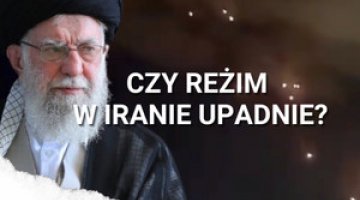Five days of clashes between Israel and Palestinian Islamic Jihad
After five days of fighting, on 13 May Israel and Palestinian Islamic Jihad (PIJ), the second-largest armed group operating in Gaza (Hamas being the largest) agreed a ceasefire. This latest instalment of the confrontation was initiated by Israel with a series of airstrikes, during which they killed six members of the PIJ’s military leadership and destroyed several hundred military facilities. Ten Palestinian civilians were also killed in the attacks. The PIJ fired more than 1400 rockets. According to Israeli reports, one in five of them fell while still over Gaza, while of those that made it to Israeli territory, more than half fell on undeveloped terrain; the rest were intercepted by Israel’s missile defence system. Two civilians were killed on the Israeli side. Gaza’s ruling Hamas party did not participate in the fighting, nor was it targeted. The ceasefire was reached, as has happened many times in the past, with the mediation of Egypt.
Commentary
- The Israeli operation was tactical in nature. It was about degrading the PIJ’s offensive capabilities and strengthening Israel’s ‘deterrence potential’. As such, therefore, it has not changed much either in the overall security picture, in the Israeli-Palestinian conflict, or even in the conflict with Gaza, especially since the target of the attack was the smallest of the fundamentalist armed organisations fighting Israel, which cannot compare in terms of potential with Hamas, and especially not with Lebanon’s Hezbollah.
- Instead, there are many indications that the decision to carry out the attack had a domestic political context, and was intended to calm the situation within the Israeli coalition – specifically, to take arguments away from its extreme nationalist wing (Itamar Ben-Gvir’s Otzma Yehudit party), who have expressed their unhappiness with the state’s insufficiently forceful response to PIJ’s previous shelling attack on 2 May. For Prime Minister Binyamin Netanyahu, unity within the coalition is particularly important now because of the need to pass a budget bill by the end of May (if that fails, early elections will be necessary). As a result of this operation, Ben-Gvir was forced to end his de facto boycott of the current cabinet’s work. The operation also brought Netanyahu additional benefits: it diverted attention from the ongoing public demonstrations against the judicial changes, forced the opposition to support the government, and boosted his personal popularity, which had been badly damaged by the protests.
- The clash confirmed the weakness of the Palestinian Authority, which has no influence over what happens in Gaza. In turn, it strengthened the position of Hamas; although they took no part in the confrontation, they undoubtedly had an impact on the events as the political force that controls the Strip. To some extent, therefore, it was fighting Israel via the proxy of PIJ, while compromising neither its organisational resources nor the economic concessions it managed to negotiate for Gaza after the 2021 clash – including, most notably, permits to work within Israel for more than 20,000 Palestinian workers. In this way, Hamas has attempted to present itself (to both the Palestinian public and the wider Arab world) as a responsible political force; that can only strengthen its position in the context of competition for future control of Palestinian Authority structures in the West Bank.





